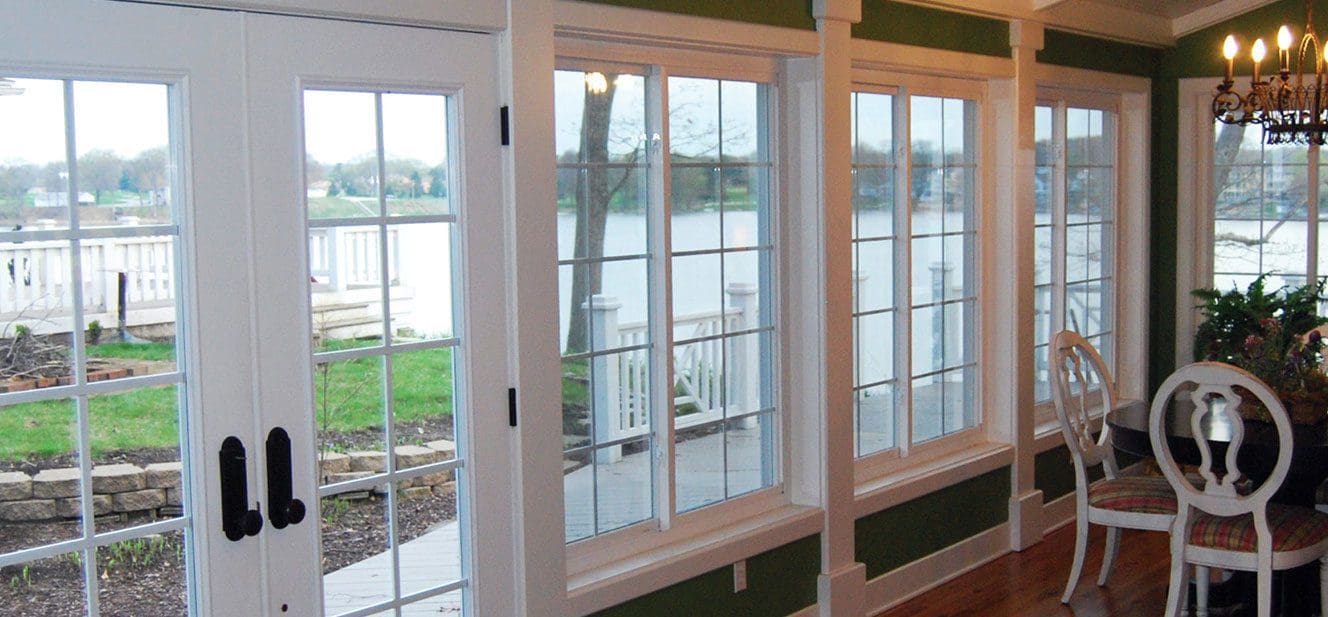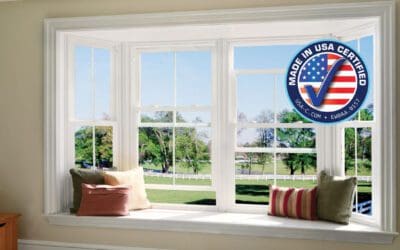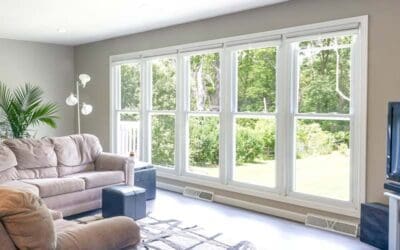Selecting the right window material for your home is crucial. Today, the battle often boils down to fiberglass vs. vinyl windows. However, deciding which is better can be daunting, given the array of options available. In this article, we will guide you through the critical differences between fiberglass and vinyl windows, discussing their aesthetics, price, energy efficiency, installation process, durability, availability, maintenance, and potential impact on your home’s value.
Fiberglass Vs. Vinyl Windows: Which Is Better?
In truth, neither is inherently superior. The choice largely depends on your personal preferences, home style, and budget. Both materials have unique strengths, and understanding these can guide you to the right choice.
Aesthetics of Fiberglass Vs. Vinyl Windows
Fiberglass window frames, made partly from recycled glass fibers, used to have a distinct aesthetic advantage, as Fiberglass can be textured to mimic wood grain, delivering a rustic charm that many homeowners find appealing. Additionally, they can be painted, providing an array of customization options.
However that advantage has been mitigated with Homestar and Innovations windows from HomeGuard Industries. Their windows are made from a superior Virgin PVC (polyvinyl chloride). They also have the ability to offer wood grain interiors in a variety of species and a wide array of colors. Furthermore their vinyl can be painted. In fact their painted vinyl windows carry a 15 Year Warranty on the paint!
Lower Quality Vinyl Window Frames on the other hand, cannot be textured or painted, limiting your color choices. As a result, many homeowners opt for the standard white vinyl frames, which may lack a certain visual appeal for some.
Price of Fiberglass Vs. Vinyl
When it comes to price, vinyl takes the lead. It is among the most affordable window frame materials, with an average replacement cost of about half the cost of Fiberglass which is on the pricier end of the spectrum.
Energy Efficiency of Fiberglass and Vinyl
Energy efficiency is a key consideration for some homeowners. Vinyl windows strike a balance between affordability and insulation, offering better insulation than aluminum frames. Furthermore, they often feature voids that can be filled with foam insulation for enhanced temperature control.
Fiberglass windows, however, take the crown for energy efficiency and helping reduce energy costs. Keep in mind, these are also twice as expensive so your up front costs will be significantly more. That means you will have to live in your home for decades before any of those savings start to show up.
Installation Process
The installation process differs in terms of complexity. Vinyl windows are relatively easy to install due to their flexibility making them ideal for older and settled homes. Fiberglass windows, on the other hand, are rigid, which makes their installation more challenging.
Maintenance Comparison
Both vinyl and fiberglass window frames are low maintenance. Neither material will rust or fade significantly from UV exposure. Typical Vinyl Windows cannot be painted, while our Homeguard lines and fiberglass only needs repainting if you wish to change the color“`html
.
Fiberglass Vs. Vinyl Windows: Which Adds More Value to Your Home?
Both vinyl and fiberglass windows can enhance your home’s value. However, When it comes to recouping money spent on upgrading windows, both fiberglass and vinyl windows have their pros and cons. Here are some key points to consider:
Fiberglass Windows
- Fiberglass windows are generally 100% more expensive installed than vinyl windows.
- When considering your resale value you will typically regain 55% of the investment you make in Replacement Windows.
- Fiberglass windows are slightly more durable and have a longer lifespan than vinyl windows.
Vinyl Windows
- Vinyl windows are less expensive than fiberglass windows and can offer almost the exact same benefits with the right brand.
- Vinyl windows usually receive a higher resale value than fiberglass replacement windows.
- Research shows that vinyl windows have a 74% return on investment, which is considered good in terms of home improvements.
In summary, if you’re looking for a lower upfront cost, vinyl windows may be a better option. Even if you’re thinking about long-term durability and eventual resale value, vinyl windows may be a better investment. Ultimately, the decision will depend on your specific needs and budget.
Wrapping Up
In the battle between fiberglass and vinyl windows, the ‘better’ choice largely depends on your specific needs and circumstances. Take into account factors such as your budget, aesthetic preferences, and your home’s style before making a decision.
Fiberglass windows tend to be significantly more expensive, but offer increased durability, and a slight increase in energy efficiency. They are an excellent choice if you’re looking for long-term value and willing to invest quite a bit more upfront.
Vinyl windows, on the other hand, are more budget-friendly. They offer excellent energy efficiency and durability, making them a good fit for homeowners who want a balance between cost and performance.
Remember, whether you go for fiberglass or vinyl windows, proper installation is crucial to maximize their benefits. Always consider professional installation to ensure your windows are installed correctly and that you maintain the validity of your warranty.
By keeping these considerations in mind, you can choose the perfect windows to enhance the comfort, energy efficiency, and value of your home. Happy renovating!





